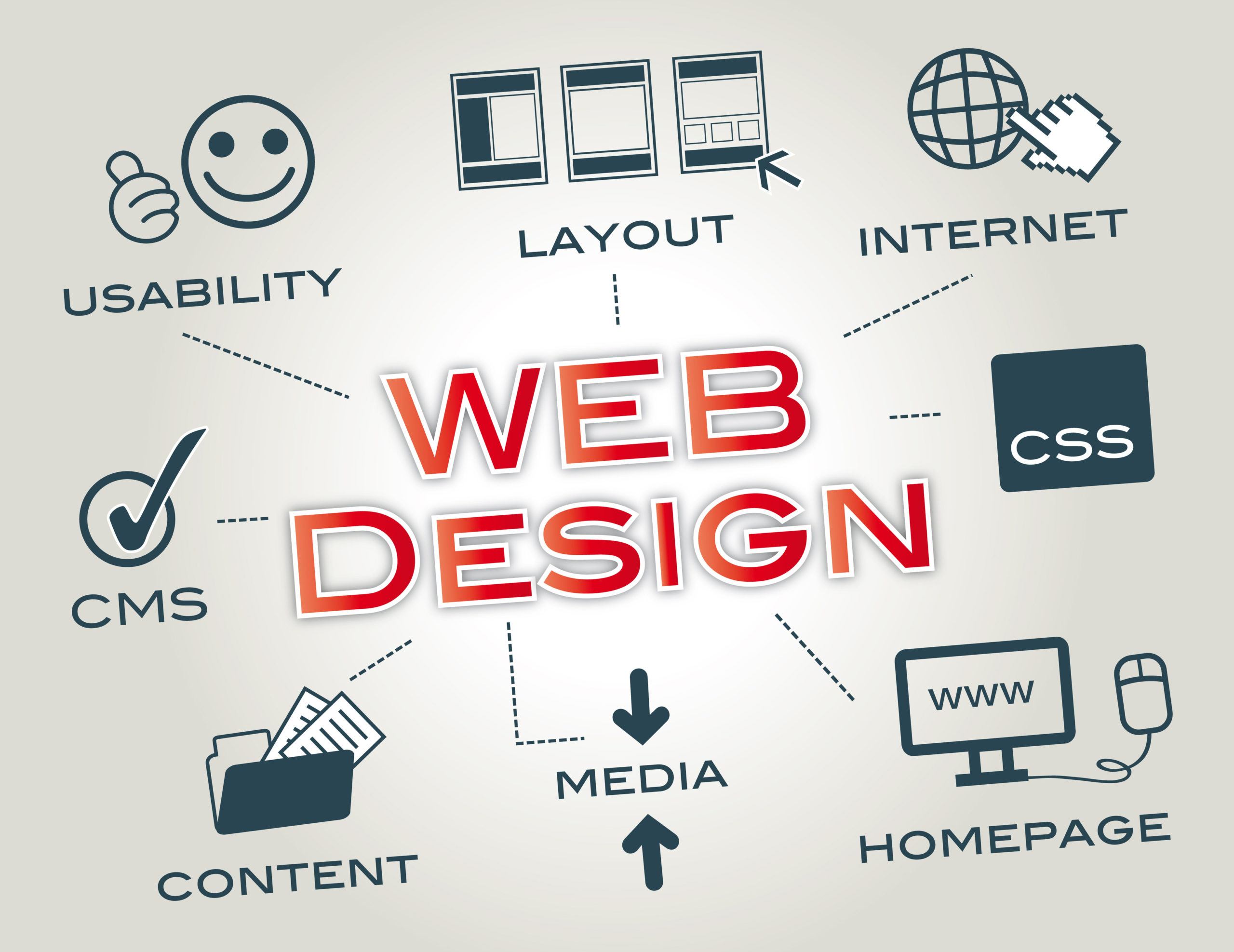The Relevance of User Experience in Efficient Web Design Approaches
User experience (UX) works as a keystone in effective web design approaches. It shapes how customers communicate with a website, affecting their contentment and chance of returning. A properly designed UX can boost engagement through intuitive navigating and responsive formats. Ignoring these elements might lead to irritation and enhanced bounce prices. Understanding the complexities of UX is necessary for developers intending to develop compelling electronic experiences that reverberate with diverse audiences. What elements genuinely drive effective user engagement?
Recognizing User Experience and Its Effect on Layout
User experience (UX) is often regarded as a mere aspect of internet design, it basically shapes how users connect with a site. UX incorporates all aspects of the user's interaction, including usability, ease of access, and total complete satisfaction. A positive UX fosters interaction, encouraging individuals to discover the website and return in the future. Conversely, an unfavorable experience can bring about aggravation, leading to high bounce prices and shed opportunities for conversion.
Layout elements like navigation, content, and layout organization play crucial functions fit this experience. Efficient UX layout prepares for user needs and choices, guaranteeing that information is visually appealing and conveniently available. Additionally, comprehending user habits via analytics can supply valuable understandings, notifying style decisions that improve functionality. Ultimately, a detailed understanding of UX enables designers to create websites that not only draw in customers yet likewise advertise significant communications that line up with company objectives and user expectations.
Trick Concepts of Reliable User Experience
Reliable user experience depends upon several key concepts that boost website functionality and engagement. User-friendly navigation layout, receptive format basics, and the importance of visual hierarchy are essential aspects that add to a smooth interaction between customers and internet content. Understanding these concepts enables designers to create more straightforward and available electronic settings.
Instinctive Navigating Design
When individuals come across a website, user-friendly navigating style works as a critical portal to their overall experience. Effective navigating permits customers to effortlessly situate the details they look for, boosting their communication with the website. Secret concepts include clear labeling, logical organization, and regular positioning of navigation aspects. Labels should be straightforward, permitting customers to forecast the material they will discover. A well-structured power structure aids individuals comprehend the relationship between different sections, assisting them via the site effortlessly. In addition, receptive menus and easily accessible links add to a liquid experience throughout devices. By prioritizing intuitive navigation, designers can greatly lower user disappointment and increase engagement, eventually cultivating a favorable assumption of the site and its web content.
Responsive Format Essentials
A well-structured navigating system naturally results in the need for a responsive format, which is crucial in today's diverse digital landscape. A receptive design guarantees that websites function flawlessly across various gadgets, including smart devices, desktop computers, and tablets. This adaptability improves user experience by allowing material to be easily accessible and visually meaningful, no matter screen dimension. Key concepts of responsive layout include liquid grids, adaptable photos, and media queries, which assist in excellent viewing. Furthermore, prioritizing touch-friendly aspects boosts communication on mobile devices. By carrying out a receptive format, designers can suit customers' needs, lessen bounce prices, and boost involvement. Inevitably, a well-executed receptive layout cultivates a positive user experience, urging visitors to check out the internet site additionally.
Aesthetic Pecking Order Significance
Visual power structure plays a necessary role in guiding users through a website, making sure that important info catches their interest first. By tactically using size, comparison, color, and spacing, designers can create a clear pathway for users to follow. Larger elements usually attract the eye, suggesting their significance, while contrasting colors can highlight contact us to action. Additionally, constant placement and group of related material enhance understanding, making navigation instinctive. Effective usage of aesthetic pecking order not only enhances functionality but likewise sustains the general aesthetic of the site, cultivating a favorable user experience. When individuals can conveniently identify one of the most crucial information, they are most likely to involve with the content, leading to increased complete satisfaction and interaction with the web site.
The Function of Usability in Web Design
Usability plays an essential duty in web design, especially through navigation simplicity and adherence to access requirements. Reliable navigation enhances user contentment by permitting site visitors to find details rapidly and intuitively. Conference access requirements ensures that all individuals, no matter of their abilities, can efficiently engage with the internet site.
Navigating Simpleness
Simpleness in navigation stands as a foundation of effective web design, considerably affecting user experience. A streamlined navigating system permits users to locate details promptly and with ease, reducing disappointment and boosting complete satisfaction. Clear labeling and sensible structure are vital components, guiding individuals easily via the web site. Repetitive web links or overly complex menus can disorient users, causing boosted bounce rates. Additionally, mobile responsiveness must be thought about, ensuring navigating stays simple throughout gadgets. Focusing on necessary web pages and minimizing mess better sustains user involvement. Effective navigation not just fosters a favorable experience however likewise urges customers to discover the website a lot more thoroughly, inevitably causing greater conversion rates. In this respect, navigating simpleness functions as a critical factor in the total performance of web design approaches.
Availability Criteria
User engagement is greatly boosted when web sites stick to ease of access criteria, making sure that all individuals, regardless of their capacities, can browse and engage effectively. Compliance with these standards not just broadens the target market but likewise enhances general user fulfillment. Available style includes attributes such as text alternatives for images, key-board navigating, and adequate color contrast, which promote usage by people with specials needs. In addition, applying these standards can favorably influence search engine optimization (SEO) by enhancing website structure and quality. As web design progresses, focusing on accessibility ends up being important in cultivating an inclusive electronic atmosphere. By embracing these criteria, designers add to a much more fair internet, eventually driving user commitment and engagement.
Relevance of Responsive Layout for User Involvement
As customers significantly accessibility web sites with a selection of tools, the value of responsive layout becomes paramount for engaging customers properly. Responsive style assurances that an internet site adapts seamlessly to different display dimensions, giving an optimal viewing experience despite the device used. This versatility enhances user engagement by assisting in less complicated navigation and interaction with content.
When individuals come across a website that is responsive, they are more probable to remain much longer, discover better, and return in the future. A properly designed receptive layout reduces the irritation usually related to scrolling and zooming on smaller displays, consequently minimizing bounce rates. Additionally, receptive style can favorably affect search engine positions, as search engines focus on mobile-friendly sites. In today's digital landscape, where mobile usage remains to rise, implementing receptive style is not just beneficial, but essential for keeping user interaction and ensuring a positive experience throughout all gadgets.
Enhancing Load Times for Better User Complete Satisfaction

To boost tons times, internet designers ought to focus on optimizing pictures, leveraging internet browser caching, and reducing HTTP requests. Furthermore, utilizing Web content Distribution Networks (CDNs) can speed up content shipment by distributing it across various geographical areas. Simplifying code, such as pressing CSS and JavaScript files, additionally adds to much faster filling speeds.
Inevitably, a dedication to boosting lots times not just go to website boosts user complete satisfaction however also strengthens brand commitment and boosts the possibility of repeat check outs. A swift, seamless experience is necessary for retaining users and fostering positive interactions.
The Impact of Visual Pecking Order on User Communication
Visual pecking order functions as a necessary element in guiding user communication on an internet site. By arranging web content in a method that prioritizes details visually, designers can affect just how individuals browse and engage with a website. This pecking order is developed through numerous design strategies, consisting of dimension, shade, spacing, and comparison. As an example, bigger typefaces or vibrant shades accentuate crucial components, such as telephone calls to activity or headlines, while subdued shades and smaller font styles can indicate secondary info.
Effective visual power structure aids individuals promptly recognize what is most crucial, minimizing cognitive lots and boosting use. It enables intuitive navigating, making it less complicated for users to find what they require without irritation. As customers interact with a site, a well-structured aesthetic power structure cultivates an extra gratifying experience, ultimately bring about greater interaction and conversion prices. Designers must prioritize these concepts to create an user-centered and efficient internet atmosphere.
Gauging User Experience: Techniques and tools

Regularly Asked Inquiries
How Can I Improve My Website's User Experience on a Budget?
To boost an internet site's user experience on a budget plan, one can maximize web page lots speed, simplify navigating, implement responsive design, enhance content quality, and collect user responses for continual refinements, guaranteeing a rewarding site visitor experience.
What Are Typical User Experience Blunders to Avoid in Web Design?
Typical user experience blunders in web design include messy formats, bad navigating, sluggish packing times, lack of mobile responsiveness, disregarding ease of access, irregular branding, and falling short to prioritize user comments - web design company. Each can significantly hinder total site effectiveness
How Typically Should I Update My Web Site for Better User Experience?
Internet sites need to be updated routinely, ideally every couple of months, to keep ideal user experience. Frequent updates help address use concerns, freshen content, and adjust to transforming user needs, ensuring the site stays appealing and relevant.

Can User Experience Influence SEO Rankings on My Web site?
User experience can greatly affect SEO rankings, as search engines prioritize web sites that offer seamless navigating, fast filling times, and interesting material. A positive user experience can lead to reduced bounce prices and greater search visibility.
What Role Does Accessibility Play in User Experience Design?
Availability plays an essential duty in user experience style by making sure that all people, no matter abilities, can interact and navigate with a website effectively. This inclusivity improves overall complete satisfaction and interaction among diverse users.
User experience (UX) is often regarded as a plain aspect of internet style, it basically forms how individuals engage with a site. User interaction is greatly improved when websites adhere to access requirements, making sure that all users, regardless of their capacities, can browse and interact effectively. Gauging user experience (UX) is crucial for recognizing exactly how properly an internet site meets the needs of its users. Furthermore, usability screening, where actual customers browse the website while onlookers note troubles, supplies straight responses on user experience. Usual user experience mistakes in web design consist of chaotic layouts, poor navigation, slow packing times, absence of mobile responsiveness, ignoring accessibility, inconsistent branding, and stopping working to focus on user comments.